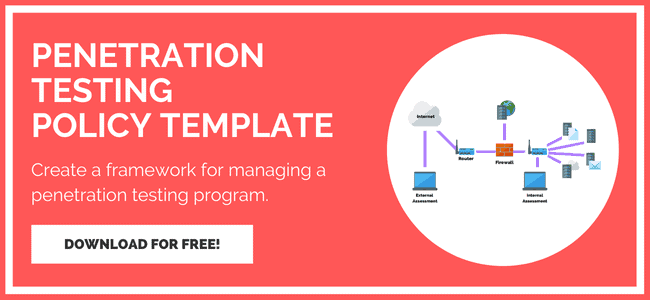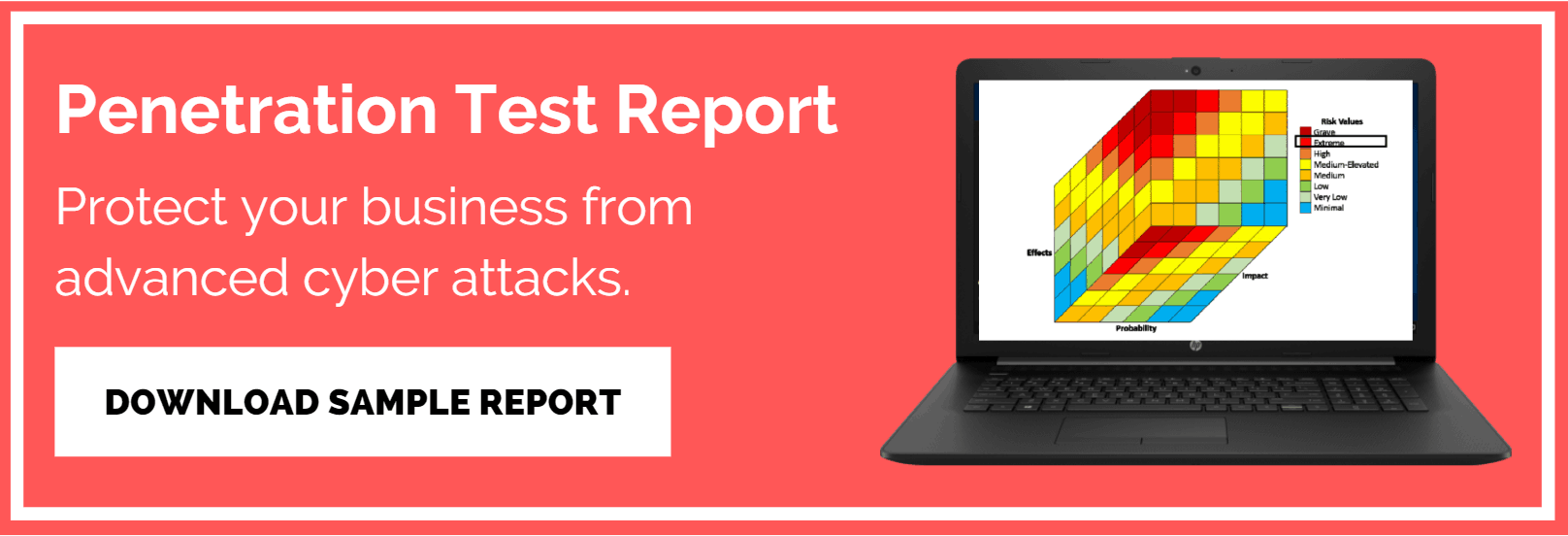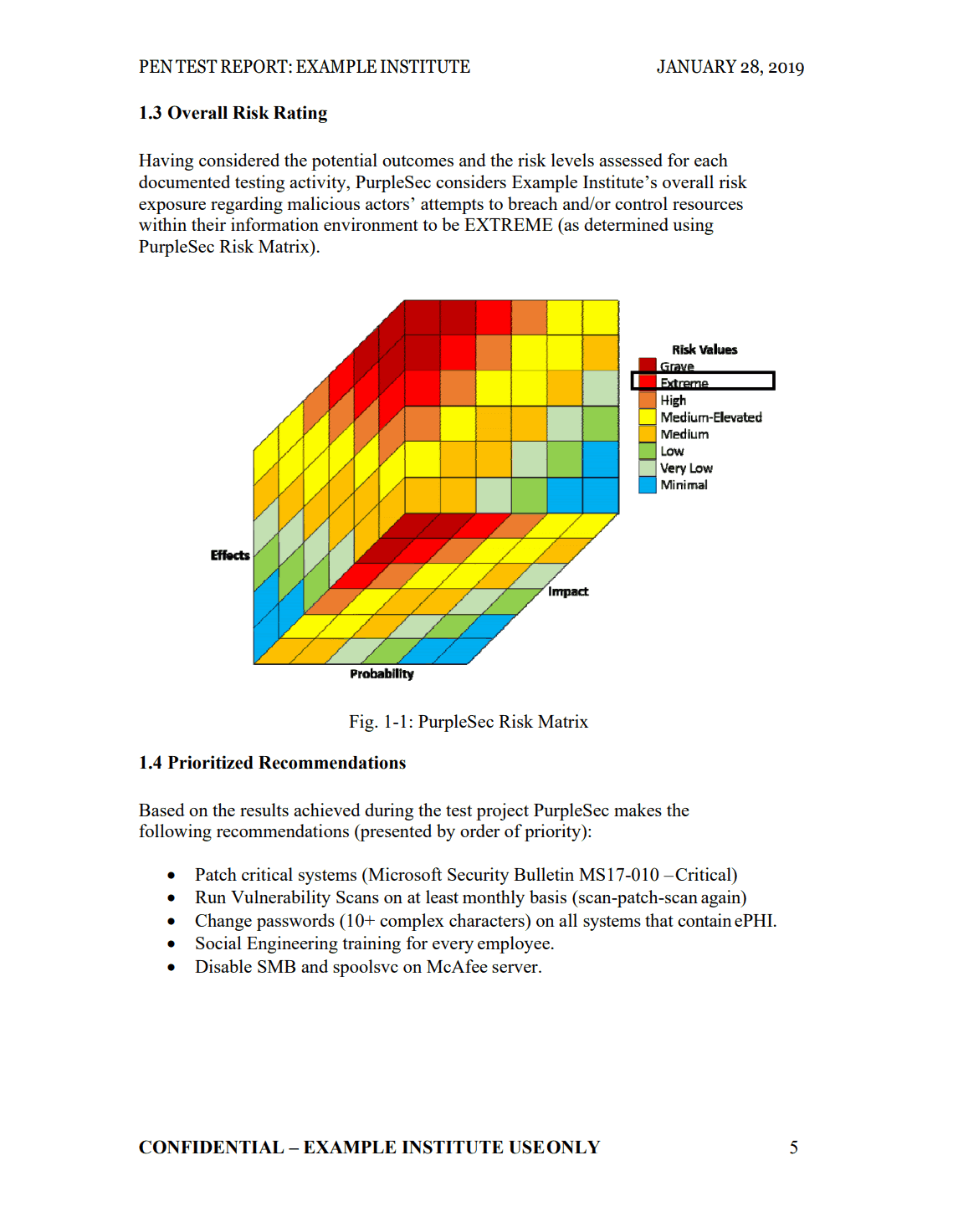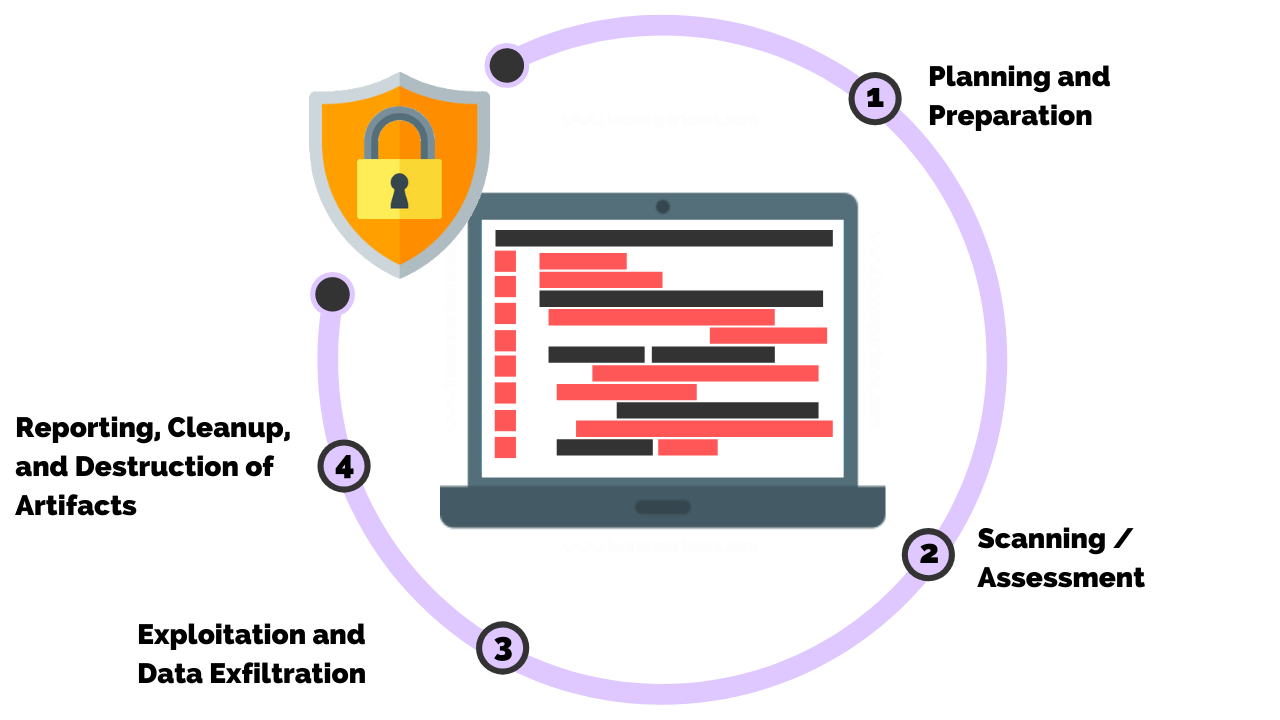
Advanced Penetration Testing Methodologies & Frameworks
Test & Validate Your Security Posture
Our penetration testing services deliver immediate ROI with an agile and efficient solution testing resilience against the latest attacks and APT techniques.
Performing routine penetration testing has become an essential layer of defense to prevent modern-day cyber security attacks.
While the goals and types of penetration testing may vary, there are 4 main steps in the penetration testing methodology which include planning and preparation, scanning / assessment, exploitation and data exfiltration, and reporting, cleanup, and destruction of artifacts.
In this article, we will dive into our framework for performing a successful penetration test.
By the end, you’ll have the knowledge of how pen testing works from an operational perspective along with what prospective customers should expect when engaging with a vendor.
Article Navigation
- Our Methodology
- Step 1: Planning and Preparation
- Step 2: Scanning / Assessment
- Step 3: Exploitation and Data Exfiltration
- Step 4: Reporting, Cleanup, and Destruction of Artifacts
- Project Deliverables
- What Customers Need To Provide
Types Of Penetration Testing |
||
|---|---|---|
 |
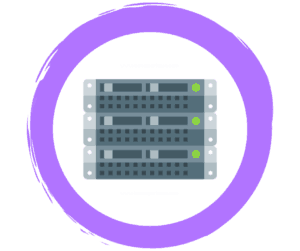 |
 |
Wireless |
Network |
Social Engineering |
 |
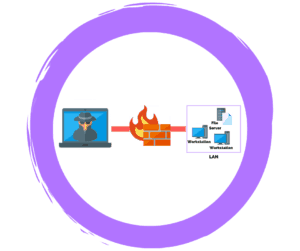 |
 |
Physical |
Firewall |
Web Application |
Our Penetration Testing Methodology
PurpleSec’s penetration test methodology includes in-depth testing for a variety of well-known as well as more obscure vulnerabilities. Going beyond the typical vulnerability scanning process, PurpleSec performs manual testing using a customized, proven approach.
This approach yields results that aren’t possible through automated vulnerability scans and includes testing based on the OWASP Top 10, as well as the OWASP Application Security Verification Standard (ASVS) 3.0 Project.
Leveraging real-world experience, PurpleSec maintains a competitive advantage in knowing how attackers think, operate, and bypass the latest in defensive technologies.
With this invaluable insight, PurpleSec is able to provide a unique methodology not only in testing the in-scope application but also in providing best-practice recommendations.
- Create a threat model of the web app by mapping site interaction.
- Gather information about the website and identify points of user input.
- Analyze infrastructure and configuration management of the web app.
- Perform manual and automated testing.
- Rate findings.
- Identify appropriate countermeasures.
Step 1: Planning and Preparation
During this step, both parties exchange initial information, plan, and prepare for the IT Security Assessment.
Prior to testing, a formal assessment agreement is signed by both parties.
This agreement provides the basis for all project work and mutual legal protection. It will also specify the specific engagement team, the exact dates, times of the test, escalation path, and other arrangements.
The primary outcome of the planning and preparation step is the:
- Identification of contact individuals from both sides.
- Opening meeting to confirm the scope, approach and methodology.
- Agreement to specific test cases and privilege escalation paths.
Step 2: Perform A Scan / Assessment
A vulnerability assessment is a layered approach that includes an actual penetration test. During this step, a test plan is developed, tool kits are built, the assessment itself is conducted, and analysis of the assessment is performed.
Develop A Test Plan
Based on the information gathered during planning and preparation a detailed test plan that outlines the steps necessary to produce the final vulnerability assessment report is created.
The test plan also includes the resources and the methodology used to assess and exploit the vulnerabilities on the target network.
Build The Toolkit
Once the test plan has been developed a list of testing tools (commercial, publicly available, manual), methodologies, and publicly available exploits is drafted.
The purpose of this is to have a clearly defined path for the pen tester to identify and exploit vulnerabilities in the target systems in order to gain unauthorized access.
It’s considered best practice to include a list of tools and methodologies used for testing within the final report.
However, if the vendor does not provide this information then ask and they will produce the list.
Conduct The Assessment
By running the selected tools and applying the chosen methodologies, a large amount of information is gathered about the target network systems and related vulnerabilities.
This information is crucial to penetrating the corporate defenses or being used in another part of the external assessment.
Analysis
The assessment phase usually produces a large amount of raw data.
The analysis phase allows security engineers the opportunity to review the findings and develop a strategy on possible weaknesses and possible means of exploitation. The engineer will attempt to identify all active systems present on the network and determine software and hardware versions installed.
If a particular host employs authentication services (such as Mail or FTP server) it will be checked for the presence of default or standard login accounts. Lastly, this phase will determine the priority and risk profile of all vulnerabilities.
Step 3: Exploitation and Data Exfiltration
Once the vulnerabilities are identified in the previous phase an engineer will attempt to verify the validity of these vulnerabilities by exploiting them.
This task will only be performed at the request of the customer and only after having obtained formal authorization. The benefit of performing this step is positive verification that the particular vulnerability exists.
The engineer will review the strength of any authentication systems present on network hosts and on remote terminal sessions by attempting to use easily guessable passwords based on common English dictionary.
Establishment And Extraction
Carrying the previous task further, the engineer will attempt to gain access to the information contained on the protected network segments. Once within the system, the customer will be provided with evidence of the penetration.
Attack Vectors
Penetration tests use a variety of attack vectors in an attempt to exploit weaknesses and threats within systems or web applications.
These attack vectors may consist of any of the following methods:
- Invalidated input
- Broken authentication
- Insecure transmission
- Denial of service (DoS)
- Broken access controls
- Weak data protection
- Broken session management
- Cross-site scripting (XSS)
- Insecure storage
- Injections Buffer over flows
- Cross-site request forgery (CSRF)
- SSL certificate security
- Improper error handling
- Cookie poisoning
- Privilege escalation
- Insecure configuration
- XML external entry expansion
- Information disclosure
- System finger printing
- Services probing
- Analysis and identification of attack vectors
- Exploit testing
- Authentication attacks
- Vulnerability exploitation
- Exploitation of configuration flaws
- Credential spraying
- SQL injection
- Unauthorized access to sensitive data
Benchmarking
In most cases, the vendor will review the customer’s security program and perform a gap analysis in line with industry best practices. Recommendations will be based on the best-of-breed security controls and methodologies, such as CSI benchmarks, NIST standards, or CMMC.
Step 4: Reporting, Cleanup, and Destruction of Artifacts
If a critical issue is identified in the course of the security assessment, it will be reported immediately to ensure that the customer is aware of it. At this point, the specifics should be discussed and countermeasures to safeguard against this issue will be provided.
Final Reporting
After the completion of all test cases defined in the scope of work, a written report describing the detailed results of the tests and reviews will be delivered with recommendations for improvement.
The report will follow a well-documented structure (see Deliverables section below).
Clean Up And Destroy Artifacts
All information that is created and/or stored on the tested systems will be removed from these systems. If this is for some reason not possible from a remote system, all these files (with their location) will be detailed in the technical report so that your technical staff will be able to remove these after the report has been received.
Project Deliverables
When engaging with a vendor it’s important to fully understand the types of reports that will be delivered. The value in performing a penetration test is greatly tied to the outcome of these reports in order for senior management teams to make informed decisions on how best to secure their systems.
Project deliverables for penetration testing may include the following reports:
- Reconnaissance scoping report
- Detailed technical report
- Itemized exportable report
- Executive summary report
- Remediation reports
Reconnaissance Scoping Report
A document listing the systems in scope discovered during the reconnaissance or discovery phases.
This should include output from information gathering and discovery activities that are intended to map the attack surface of the target environment. This will be reviewed to determine if any scoping adjustments need to be made.
Detailed Technical Report
The technical pen test report typically includes:
- The methodology employed including the threat model.
- Positive security aspects identified.
- Detailed technical vulnerability findings.
- A risk rating for each vulnerability.
- Supporting detailed exhibits for vulnerabilities when appropriate.
Post remediation updated reports may be also be requested in the event there are open issues.
Itemized Exportable Report
A report in an exportable format (Excel, XML) is typically delivered to the customers. This itemized list includes all findings with high-level category, subcategories, criticality, and IP/hostname, which is required for input into a risk tracking system.
A bank template may also be provided.
Executive Summary Report
A document developed to summarize the scope, approach, findings, and recommendations, in a manner suitable for senior management.
It is typical of a vendor to provide an executive presentation to discuss the report in further detail and to ensure all obligations within the scope of work have been satisfied.
Remediation Reports
Upon completion of the initial test, the customer will work to remediate known vulnerabilities and exploits as outlined in the final report.
A retest is then performed on high and medium findings after the remediation period. The purpose of this retest is to validate and confirm that issues were remediated or mitigated.
What Do Customers Need To Provide?
To optimize the effectiveness of the penetration test, customers need to provide access to systems, services, and employees.
To perform the work specified in many scopes of work, customers are required to provide following information:
- Access to relevant personnel.
- Relevant documentation.
- A primary point of contact.
- Coordination of events with customer team members.
- Customer onboarding documentation.
Related Articles
- How Often Should You Perform A Penetration Test?
- External VS Internal Network Penetration Tests: What’s The Difference?
- Vulnerability Scans VS Penetration Tests: What’s The Main Difference?
- Web Application Penetration Testing: Steps, Methods, And Tools
- How To Perform A Successful Wireless Penetration Test

